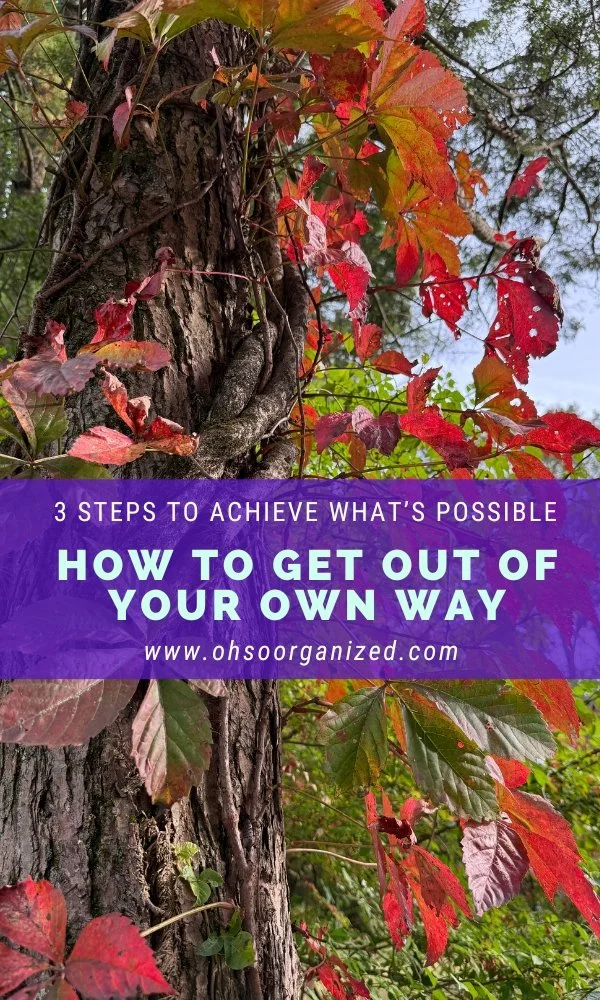It’s the holiday season. Lights twinkle, gifts get wrapped, and plans are in flux. You’re doing your best to keep up with your daily commitments and the extra effort it takes to navigate this season of celebration, gatherings, and giving. It can be a lot, both wonderful and overwhelming.
On one hand, you have extra time to be with your loved ones and take a break from your normal routines. However, there can also be pressure to say “yes” to all invitations, buy gifts beyond your budget, or overindulge in holiday treats. There are more delicious cookies around than usual. Oh, no!
While the holiday season can be joyful, it can also be stressful, making you feel anxious and out of balance. The good news is that it doesn’t have to be that way.
Recently, I discovered some wonderful grounding practices in “Are You Made at Me? – How to Stop Focusing on What Others Think and Start Living for You” by Meg Josephson, LSCW. These strategies help break the cycle of chronic stress, which negatively affects the mind and body.
Stress: “A Flirty Little Loop”
What is the stress cycle all about? Josephson explains, “The body naturally responds to stress – whether it’s real, remembered, or perceived– with tension, and this response keeps stress and tension going in a flirty little loop.” She describes the four-step cycle:
Stressful Happening – This could be internal or external, such as “an anxious thought spiral or someone doing something to make you feel unsafe, whether or not you actually are.”
Body Reacts – Your body responds by tensing up.
Message Perceived – Tensed muscles send signals to the body indicating that “Something bad is happening! This is stressful.”
Cycle Continues – “The tense muscles cue more anxious thoughts, more muscular tension, and more panic.” These reactions perpetuate the stress-and-tension loop.
Josephson says, “When the mind is tense, so is the body. When the body is tense, so is the mind. By first noticing that we’re tensing up, feeling stressed, we can immediately insert a pause into this automatic process and begin to soften our bodies. Being aware of the stress is what allows us to start to break the cycle.”
I will highlight my top five favorite grounding practices from the 14 that Josephson shared. These will help you reduce stress, feel more balanced, present, and calm.
“When the mind is tense, so is the body. When the body is tense, so is the mind. ”
5 Simple Grounding Practices to Reduce Stress and Nurture Balance
These techniques can be used at any time during your day when you feel stressed. It all starts with awareness—paying attention to body signals like tense muscles.
1. Increasing Exhale
Elongate your exhale by doing a few cycles where you exhale longer than you inhale. For example, inhale for a count of 4 and exhale for a count of 6. This technique stimulates the vagus nerve, which immediately activates the parasympathetic nervous system, or “rest and digest” mode.
2. Humming
Keep your mouth closed, relax your jaw, and breathe in and out through your nose while making a sound with your vocal cords. The gentle buzzing sound creates vibrations that stimulate your vagus nerve. Singing or chanting can also work because the larynx (the voice box) is connected to the vagus nerve.
3. Sensing with 5, 4, 3, 2, 1
Use your senses to ground yourself by noticing the environment around you right now. Observe what’s nearby, and “Name five things you can see, four things you can feel, three things you can hear, two things you can smell, and one thing you can taste.”
4. Using Your Hands
Research shows that “effective touch” is a stress reliever. This can include self-touch. Notice where you feel tension. Place your hand or palm on that area and breathe deeply. For example, if you’re feeling tension in your chest, put your hand there and breathe several times. This practice is calming and reduces stress.
5. Dancing
This practice feels especially fun during the holiday season. Of course, you can do it anytime. Dancing helps integrate movement and breath. It connects you to your body and takes you out of your head. Play your favorite tune and dance away.
How Do You Manage Stress and Invite More Balance?
It’s the season for joy and delight. But when you’re feeling stressed and off balance, accessing that joy can be difficult. Which of these five grounding practices resonates most with you? What else helps you feel grounded, calm, and balanced?
I’d love to hear your thoughts. I invite you to join the conversation.
How Can I Help?
Do you feel overwhelmed, disorganized, stressed, or out of balance? Would you like to make progress? I’m here to help! Virtual organizing is an extraordinary path forward – Local feel with a global reach.
Let’s connect! I’m easy to reach.
Fill out the Contact form
Email me at linda@ohsorganized.com or
Call 914-271-5673
Getting organized is possible, especially with support.


















